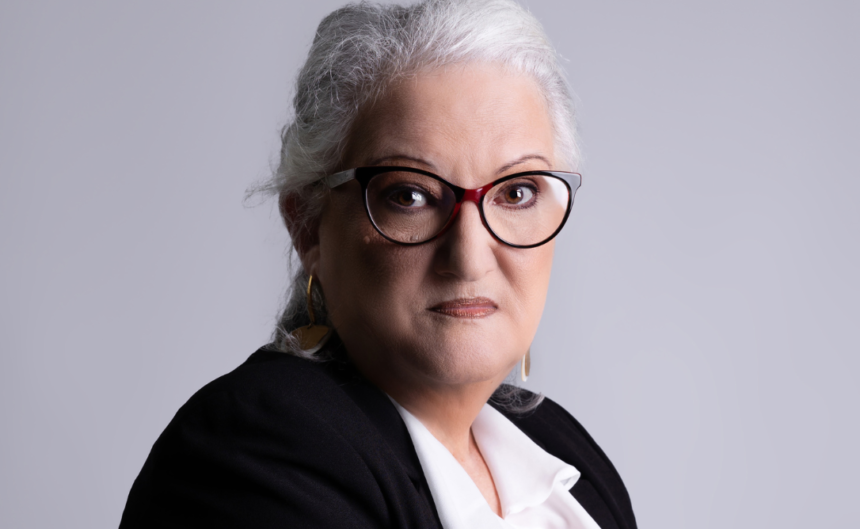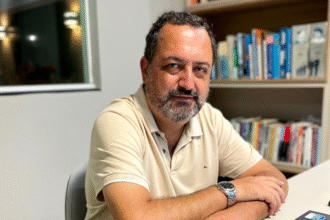In the book “The Weight of Silence,” author Maria Tereza Alvim delves into the stories of Madalena and her three younger siblings, orphaned after their mother abandoned them and their father died. Set in the countryside of Minas Gerais, the book portrays the abuse and mistreatment experienced by children when they are separated and taken in by different families, exposing the silent consequences of child abuse and the importance of acceptance for emotional healing.
The title of the book suggests an emotional weight that runs through the entire narrative. How do you see silence as a factor that perpetuates the pain of the characters and, consequently, of society?
Silence, in the context of the story, is a reflection of the emotional and social repression that the characters face. It perpetuates pain because it prevents the expression of suffering and, consequently, healing. In society, silence is a wall that hides difficult realities, causing issues such as abuse and trauma to be treated as taboo, further increasing the isolation of victims. In exploring this theme, I sought to show how breaking the silence can be liberating and transformative.
Your child characters face sudden losses and striking violence. What was the process like of writing these passages and balancing sensitivity with the harshness of reality?
It was an emotional and creative challenge. I wanted to be faithful to the pain without sensationalizing it, showing the profound impact these experiences have on a child’s soul. To balance sensitivity and reality, I sought a delicate tone, where descriptions are suggested rather than explained. The focus was always on the emotional experience and resilience, not on the events themselves.
Madalena carries an immense emotional and physical burden, but finds the strength to move forward. What do you think makes her such a strong and inspiring character?
Madalena’s strength comes from the love she feels for her brothers and her desire to give them a different future. She finds motivation in the responsibility she has taken on, which helps her overcome her own pain. Her strength does not lie in the absence of weakness, but in the courage to face her fears and challenges. What makes her so strong is precisely her ability to move forward, despite difficulties.
The plot takes place in the interior of Minas Gerais, where tradition and conservatism often stifle certain truths. How does the social context influence the difficulties faced by Madalena and her siblings?
The social context is a silent character in the narrative. In the interior of Minas Gerais, the weight of appearances and the fear of social judgment directly influence the characters’ decisions. Conservatism contributes to the silence on sensitive topics, causing Madalena and her siblings to carry their traumas alone. By setting the story in this scenario, I wanted to show how the cultural environment can shape destinies and imprison emotions.

The story is told from two perspectives, one of them from Madalena’s best friend. How did you construct this perspective on absence and the emotional impact it causes?
The best friend’s perspective was essential to broaden the narrative, showing how pain reverberates beyond the family nucleus. I wanted to explore how silence affects not only those who carry it, but also those who love them and do not understand what happened. Constructing this perspective required sensitivity to show the void left by Madalena’s absence, reinforcing the emotional impact that silence can have on the lives of those around her.
Amidst so much pain, there is room for affection and reconstruction. How does the arrival of siblings to a new home reinforce the importance of welcoming and redefining the concept of family?
Acceptance is one of the keys to emotional healing. Upon finding a new home, the siblings discover that family goes beyond blood ties. It’s about love, acceptance, and belonging. By showing this reconstruction, I wanted to highlight that even the most painful experiences can be reinterpreted through affection and emotional support. This journey of acceptance helps the characters understand that it is possible to love and be loved again.
You address sensitive issues that are often silenced by society. How do you believe literature can help bring these realities to light and provoke reflection?
Literature has the power to give voice to what is silenced, allowing readers to connect with experiences that are often ignored. By addressing these issues, I hope not only to raise awareness, but also to open up space for dialogue. I believe that stories have the power to generate empathy and help people see beyond their own realities, promoting a more compassionate and understanding view of others.
Your book moves between different moments in the characters’ lives. How does this narrative structure help show that certain traumas are never truly abandoned?
The choice to move between different time periods was intentional to show how the past resonates in the present. Traumas do not disappear; they shape identities and behaviors throughout life. By switching between the phases of the characters’ lives, I explored how emotional scars continue to influence their decisions, revealing that pain does not go away, but can be transformed.
You mention the desire to give voice to silenced human experiences. What was your creative process like to ensure that this representation was faithful and respectful?
Respect for the human experience was my main guide. I did careful research to understand the depth of the themes covered and put myself in the characters’ shoes to convey their pain with empathy and authenticity. In addition, I sought to narrate the experiences with emotional honesty, without romanticizing or exaggerating them, ensuring a faithful and sensitive representation.
The Weight of Silence deals with difficult topics, but it also brings hope. What is the main message you would like the audience to take away with them after reading it?
The main message is that no matter how painful silence is, it can be broken. I want readers to understand that there is strength to be found in vulnerability and that talking about pain is the first step to healing. Most of all, I hope that “The Weight of Silence” inspires courage and empathy, showing that no one is alone in their emotional journey.
Follow Maria Tereza Alvim on Instagram





